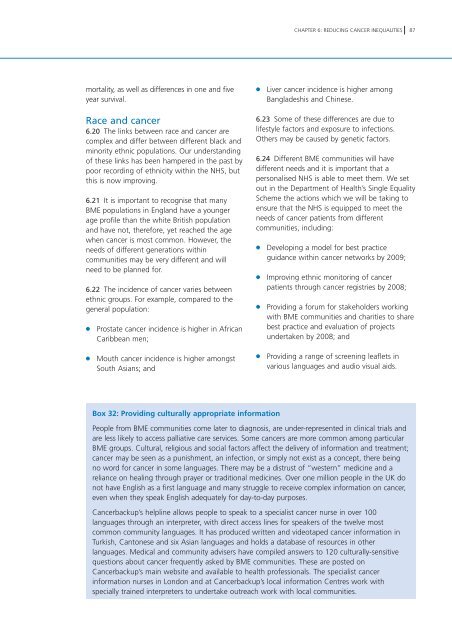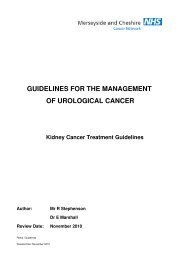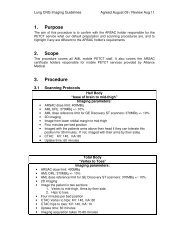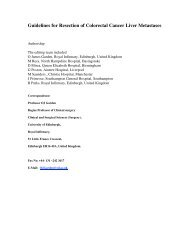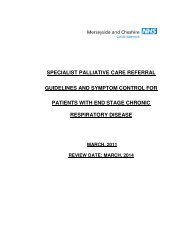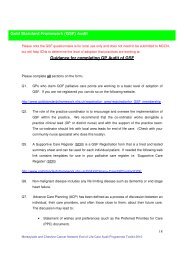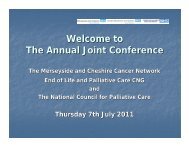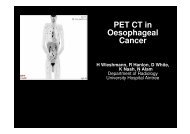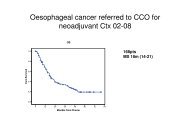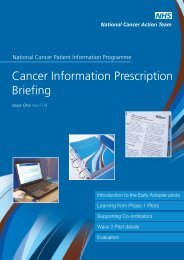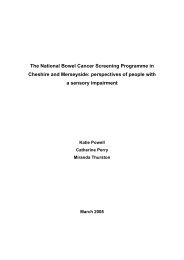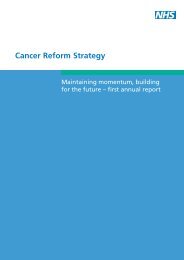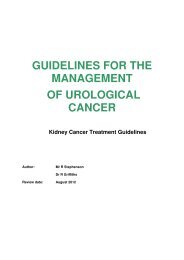Cancer Reform Strategy - NHS Cancer Screening Programmes
Cancer Reform Strategy - NHS Cancer Screening Programmes
Cancer Reform Strategy - NHS Cancer Screening Programmes
- No tags were found...
Create successful ePaper yourself
Turn your PDF publications into a flip-book with our unique Google optimized e-Paper software.
CHAPTER 6: REDUCING CANCER INEQUALITIES 87mortality, as well as differences in one and fiveyear survival.●Liver cancer incidence is higher amongBangladeshis and Chinese.Race and cancer6.20 The links between race and cancer arecomplex and differ between different black andminority ethnic populations. Our understandingof these links has been hampered in the past bypoor recording of ethnicity within the <strong>NHS</strong>, butthis is now improving.6.21 It is important to recognise that manyBME populations in England have a youngerage profile than the white British populationand have not, therefore, yet reached the agewhen cancer is most common. However, theneeds of different generations withincommunities may be very different and willneed to be planned for.6.22 The incidence of cancer varies betweenethnic groups. For example, compared to thegeneral population:●Prostate cancer incidence is higher in AfricanCaribbean men;6.23 Some of these differences are due tolifestyle factors and exposure to infections.Others may be caused by genetic factors.6.24 Different BME communities will havedifferent needs and it is important that apersonalised <strong>NHS</strong> is able to meet them. We setout in the Department of Health’s Single EqualityScheme the actions which we will be taking toensure that the <strong>NHS</strong> is equipped to meet theneeds of cancer patients from differentcommunities, including:●●●Developing a model for best practiceguidance within cancer networks by 2009;Improving ethnic monitoring of cancerpatients through cancer registries by 2008;Providing a forum for stakeholders workingwith BME communities and charities to sharebest practice and evaluation of projectsundertaken by 2008; and●Mouth cancer incidence is higher amongstSouth Asians; and●Providing a range of screening leaflets invarious languages and audio visual aids.Box 32: Providing culturally appropriate informationPeople from BME communities come later to diagnosis, are under-represented in clinical trials andare less likely to access palliative care services. Some cancers are more common among particularBME groups. Cultural, religious and social factors affect the delivery of information and treatment;cancer may be seen as a punishment, an infection, or simply not exist as a concept, there beingno word for cancer in some languages. There may be a distrust of “western” medicine and areliance on healing through prayer or traditional medicines. Over one million people in the UK donot have English as a first language and many struggle to receive complex information on cancer,even when they speak English adequately for day-to-day purposes.<strong>Cancer</strong>backup’s helpline allows people to speak to a specialist cancer nurse in over 100languages through an interpreter, with direct access lines for speakers of the twelve mostcommon community languages. It has produced written and videotaped cancer information inTurkish, Cantonese and six Asian languages and holds a database of resources in otherlanguages. Medical and community advisers have compiled answers to 120 culturally-sensitivequestions about cancer frequently asked by BME communities. These are posted on<strong>Cancer</strong>backup’s main website and available to health professionals. The specialist cancerinformation nurses in London and at <strong>Cancer</strong>backup’s local information Centres work withspecially trained interpreters to undertake outreach work with local communities.


